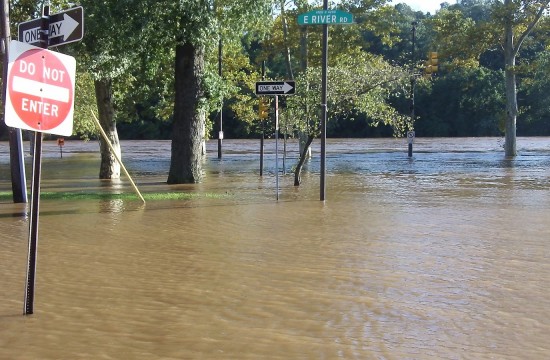May 1, 2016
The Delaware Valley is in the midst of spring, as evidenced by tree blossoms, pollen, and the allergies that come with it. Flowering that pleases the eyes but also makes them water.
Roller coaster weather forecasts that have residents in the Philadelphia region debating light jackets during the day and turning on the heat at night.
It is that atmospheric volatility that brings the United States some of its wildest weather over the spring season during the months of March, April, and May.
Of great concern to southeastern Pennsylvania in particular is severe weather, which includes; thunder and lightning storms, tornadoes, and flooding.
In late April, the Philadelphia Inquirer featured commentary from Office of Emergency Management Director Sam Phillips, PEMA Director Rick Flinn, and Regional Administrator for FEMA Region III MaryAnn Tierney.
Flood Facts
- Floods are one of the most common natural hazards in the United States. According to the Pennsylvania 2013 Hazard Mitigation Plan, Pennsylvania is one of the most flood-prone states in the U.S., with the southeastern region, including Philadelphia, being the most susceptible.
- Flooding can occur more quickly in urban areas as more runoff is created in developed urbanized areas with less green space available. Urbanization increases runoff by 2 to 6 times over what would occur in natural terrain.
- According to the CDC, flash flooding is the leading cause of weather-related deaths in the Unites States: approximately 200 deaths per year.
- Heavy rain can bring dangerous flash flooding. 6 inches of moving water can knock a person down. 2 feet of moving water can sweep a vehicle away.
- Whether you’re walking or driving, stay clear of floodwater. If you encounter flood waters on a roadway, Turn Around, Don’t Drown. Please do not drive around barricades.
- The cost of flood insurance can be a drop in the bucket compared to the cost of flood damage. FEMA statistics show the nationwide average of a flood insurance policy cost is $700 yearly compared to the average cost of flood damage insurance claim at $39,000.
- You can check your neighborhoods risk for flooding as well as flood insurance costs through FEMA’s National Flood Insurance Program.
Be Prepared
- Know what to do before, during, and after severe weather.
- Create a communications and emergency plan with your family before severe weather hits.
- Have emergency supplies in place at home, at work, and in the car.
- Listen to local officials. Stay informed through emergency mass notification systems like ReadyPhiladelphia.
- Check your insurance policies to ensure you have enough coverage.
- Evacuate if advised by local authorities.
- Are you a business owner? Whether you are Main Street mom-and-pop or Broad Street hi-rise, having a business continuity plan is imperative. Federal statistics say up to 40% of businesses never recover after a major disaster. Be Ready. Stay Open.
Is flooding your main concern and what keeps you up at night? The Office of Emergency Management needs to hear Philadelphia residents concerns through a 2 minute survey as we update the City’s Hazard Mitigation Plan.
An easy, essential way to be prepared is to stay informed. Get emergency weather, public safety, and SEPTA transit alerts from OEM’s ReadyPhiladelphia system sent to your phone or email. Stay informed prior to and during an emergency. Also, look for PhilaOEM on Twitter and Facebook.

